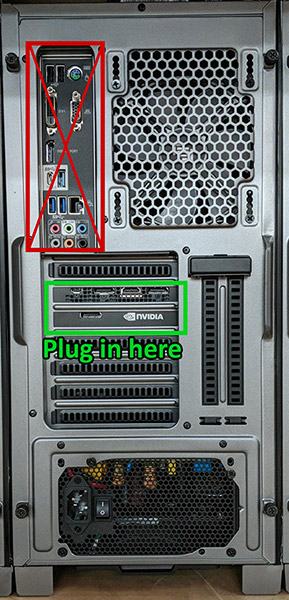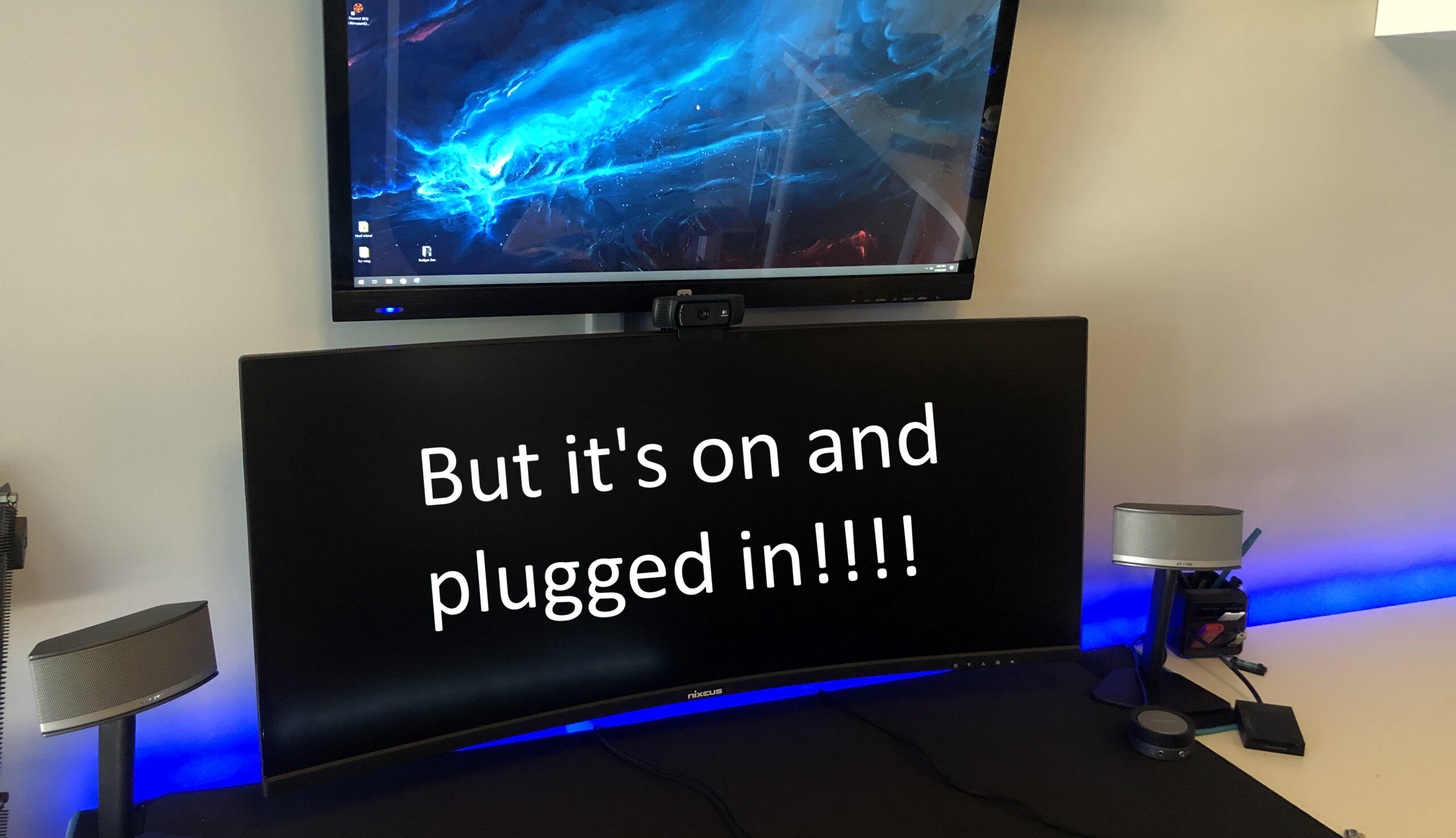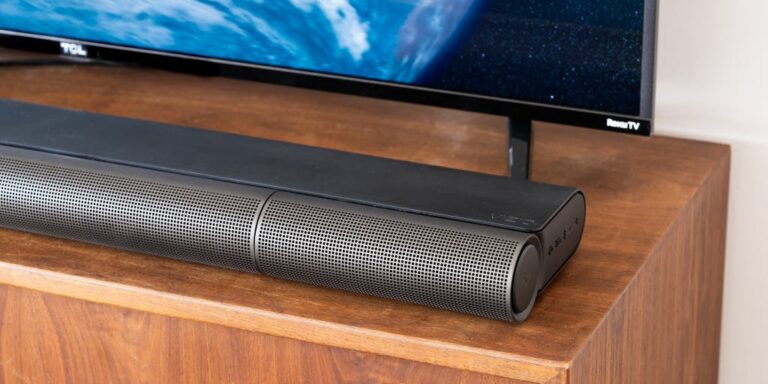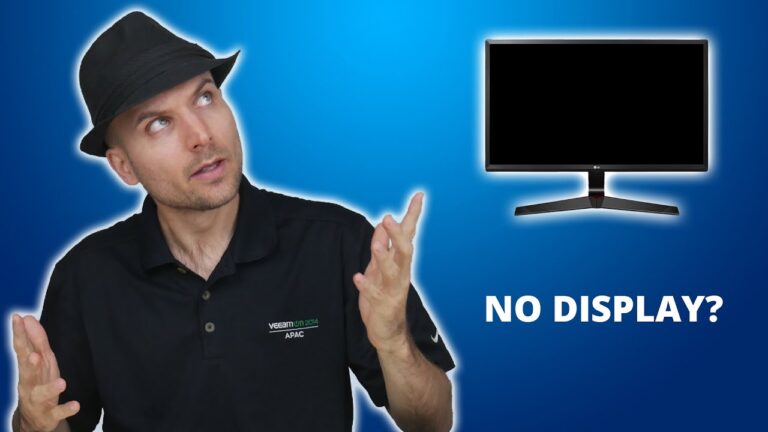Monitor Not Working? Fix it When Plugged into Graphics Card!
When the monitor is not working when plugged into the graphics card, it may be due to an outdated graphics card driver. Uninstall the current driver and update to the latest version from the official website of nVidia/AMD or ASUS.
This issue can also be caused by incorrect cable connections or faulty cables. It is important to ensure that the power cables are connected correctly and that the monitor is plugged into the correct port. Additionally, checking the Device Manager for any driver issues or yellow marks is recommended.
Troubleshooting Monitor And Graphics Card Issues
Troubleshooting monitor and graphics card issues can be a frustrating task, especially when your monitor isn’t working properly after being plugged into your graphics card. This problem can leave you feeling stumped and unsure of where to begin. Thankfully, there are some initial steps you can take to diagnose the problem and identify common symptoms and their causes. In this blog post, we will explore these troubleshooting steps and provide guidance on resolving the monitor not working when plugged into the graphics card issue.
Initial Steps To Diagnose The Problem
If you’re facing the issue of your monitor not working when plugged into the graphics card, here are some initial steps you can take to diagnose the problem:
- Ordered List
- Check the connection: Ensure that the cable connecting your monitor to the graphics card is securely plugged in at both ends. Sometimes a loose connection can cause display issues. Consider reseating the cable if necessary.
- Verify the input source: Many monitors have multiple input sources such as HDMI, DisplayPort, or DVI. Make sure the monitor is set to the correct input source that matches the cable connection to the graphics card.
- Power cycle the components: Turn off both your computer and monitor, unplug them from the power source, and wait for a few minutes. Then, plug them back in and power them on. This can help reset any temporary issues that might be causing the problem.
- Try a different cable or port: If possible, test your monitor with a different cable or try connecting it to a different port on your graphics card. Faulty cables or malfunctioning ports can sometimes be the root cause of the issue.
Identifying Common Symptoms And Their Causes
Now that we’ve covered the initial steps to diagnose the issue, let’s explore some common symptoms and their causes when your monitor is not working when plugged into the graphics card:
Table| Symptom | Cause |
|---|---|
| No display on the monitor | The graphics card driver may be outdated. Try uninstalling the current driver and installing the latest version from the official website of your graphics card manufacturer. |
| Abnormal display or distorted visuals | This can also be a result of outdated or incompatible graphics card drivers. Check for driver updates and ensure that you have the correct drivers installed. |
| “No signal” message on the monitor | Ensure that the cable connecting your monitor to the graphics card is secure and correctly plugged in at both ends. Additionally, make sure that the monitor is set to the correct input source. |
These common symptoms and their causes should help you identify where the problem lies and guide you towards an appropriate solution. Remember to update your graphics card drivers regularly for optimal performance and compatibility.
Monitor Not Working With Graphics Card
When your monitor is not working after being plugged into the graphics card, it can be frustrating and leave you wondering what the issue might be. There are a few potential reasons why this could be happening, but rest assured, there are also solutions available to resolve the problem.
Ensuring Proper Connection And Input Selection
The first step in troubleshooting the issue is to verify that there is a proper connection between the graphics card and the monitor. This involves checking all cables and making sure they are securely plugged in. Sometimes, a loose or faulty cable can cause the monitor to not display any image.
Additionally, it’s important to ensure that the correct input on the monitor has been selected. Many monitors have multiple input options, such as HDMI, DisplayPort, or VGA. Make sure that the input selected on the monitor matches the cable you are using to connect it to the graphics card.
Checking For Power Supply Issues
An inadequate power supply can also be a common cause for the monitor not working when plugged into the graphics card. Graphics cards often require a significant amount of power to function properly. If the power supply to the graphics card is insufficient, it may not be able to provide the necessary power for the monitor to display an image.
To check for power supply issues, ensure that the power connectors from the power supply are securely plugged into the graphics card. If you have multiple power connectors available, make sure to connect them all to the graphics card. It’s also a good idea to check the power supply wattage to confirm that it meets the minimum requirements for your graphics card.
If you have ruled out any power supply issues and are still experiencing problems with the monitor not working when plugged into the graphics card, it may be worth considering updating the graphics card drivers. Outdated or faulty drivers can sometimes cause compatibility issues with the monitor and the graphics card. Visit the official website of your graphics card manufacturer to download and install the latest drivers for your specific model.
By following these troubleshooting steps and ensuring a proper connection, input selection, and power supply, you should be able to resolve the issue of the monitor not working when plugged into the graphics card. Remember to double-check all connections, verify the correct input selection, and update your graphics card drivers if needed. With these steps, you can enjoy a fully functional monitor connected to your graphics card.
Update And Reinstall Graphics Drivers
If your monitor isn’t working when plugged into your graphics card, it could be due to outdated graphics drivers. Try updating or reinstalling the graphics card driver from the official website to resolve the issue.
Locating The Right Drivers For Your Card
When you encounter the issue of your monitor not working when plugged into your graphics card, it could be due to outdated graphics card drivers. In order to address this, you need to update or reinstall the drivers. The first step is to locate the right drivers for your specific graphics card. To find the correct drivers for your card, you can visit the official websites of nVidia, AMD, or ASUS. These websites usually have a dedicated section for driver downloads. You can search for your graphics card model and operating system to find the appropriate drivers. Make sure to download the latest version of the drivers to ensure compatibility and optimal performance.Step-by-step Guide On Updating Drivers
Once you have found and downloaded the correct drivers for your graphics card, you can proceed with updating them. Follow these steps to update the drivers:- Open Device Manager by right-clicking on the Windows Start menu and selecting “Device Manager”.
- Expand the “Display adapters” category to reveal your graphics card.
- Right-click on your graphics card and select “Update driver”.
- Choose the option to “Search automatically for updated driver software”. Windows will now search for the latest drivers and install them if available.
- Alternatively, you can select the option to “Browse my computer for driver software” and navigate to the location where you downloaded the drivers. Select the driver file and follow the on-screen instructions to install.
- After the installation is complete, restart your computer to apply the changes.

Credit: help.maingear.com
Advanced Troubleshooting Techniques
Having trouble with your monitor not working when plugged into the graphics card? Try updating your graphics card driver from the official website or checking the connections between your GPU and monitor. It could also be a problem with the cable used for connection.
Testing With Another Monitor Or Graphics Card
If your monitor is not working when plugged into the graphics card, it could be due to a faulty monitor or graphics card. To identify the problem, you can try connecting another monitor to your graphics card. If the new monitor works fine, then the issue lies with your original monitor. However, if the new monitor also fails to display anything, then the problem is likely with the graphics card.
In case the issue is with the graphics card, you can attempt connecting a different graphics card to your monitor. This will help determine if the problem is with the graphics card itself. If the new graphics card works, it indicates that the original graphics card is faulty and may need to be replaced.
Managing Bios Settings Related To Gpu
In some cases, incorrect BIOS settings can cause monitor connectivity issues with the graphics card. To troubleshoot this, you can access the BIOS settings and ensure they are properly configured to support the GPU.
Here are the steps to manage BIOS settings related to the GPU:
- Restart your computer and access the BIOS settings by pressing the designated key during the boot-up process (usually
Del,F2, orF12). - Navigate to the “Advanced” or “Integrated Peripherals” section.
- Look for options related to the GPU such as “Primary Graphics Adapter” or “Init Display First.”
- Ensure that the graphics card is selected as the primary display device instead of the onboard graphics.
- Save the changes and exit the BIOS settings.
By correctly managing the BIOS settings, you can ensure that the graphics card is recognized and utilized as the primary display device.
Alternatives And Solutions If All Fails
Experiencing issues with your monitor not working when plugged into the graphics card can be frustrating. However, don’t worry, as there are alternative options and solutions you can try before seeking professional repair services. In this article, we will explore two helpful alternatives and solutions to address this problem.
Considering The Use Of Integrated Graphics
One alternative worth exploring if your monitor is not working when connected to the graphics card is to consider using the integrated graphics of your motherboard. Many motherboards come with integrated graphics, which allow you to connect your monitor directly to the motherboard instead of the graphics card.
This can be a temporary solution to troubleshoot the issue and to determine if the problem lies with the graphics card or other factors. Here’s how you can do it:
- Turn off your computer and unplug the power cable.
- Disconnect the cable connecting your monitor to the graphics card.
- Locate the video output ports on your motherboard, usually located near the USB ports.
- Connect your monitor to the appropriate video output port on the motherboard using the correct cable (HDMI, DisplayPort, VGA, etc.).
- Plug in the power cable and turn on your computer.
- Check if your monitor now displays the expected output when connected to the integrated graphics. If it does, it indicates that the issue might be with the graphics card.
- Remember to reconnect your monitor to the graphics card once troubleshooting is done for optimal performance.
When To Seek Professional Repair Services
If the alternative mentioned above doesn’t resolve the issue, or if you are not comfortable working inside your computer, it might be time to seek professional repair services. Professional technicians have the expertise to diagnose and fix complex hardware problems. Here are some signs to look out for:
- The monitor still doesn’t work even when connected to the integrated graphics.
- You have tested the monitor with another computer, and it works fine.
- You have tried updating/reinstalling the graphics drivers without success.
- You have checked the power supply and made sure it is functioning correctly.
- You have reseated the graphics card and inspected for any physical damage.
When these signs align with your situation, it is recommended to contact a professional repair service for further assistance. They will be able to diagnose the problem thoroughly and provide the necessary solutions or replace faulty hardware components if required.
Other relevant content can be added hereFrequently Asked Questions On Monitor Not Working When Plugged Into Graphics Card
Why Doesnt My Monitor Work With My Graphics Card?
If your monitor is not working with your graphics card, it could be due to outdated graphics card drivers. Try updating the drivers from the Nvidia/AMD official website or the ASUS official website. Additionally, check the cable connections on the video card to ensure they are properly connected.
Why Is My Graphics Card Working But No Display?
Possible short answer: The graphics card may be working, but there is no display because the driver is outdated. Uninstall the current driver and download the latest version from the manufacturer’s website. Also, check the cable connections between the graphics card and monitor to ensure they are properly connected.
Why Is My Monitor Working But No Display?
If your monitor is working but not displaying anything, it could be due to outdated graphics card drivers. Try uninstalling the current drivers and updating to the latest version from the manufacturer’s website. Additionally, check the cable connections between the graphics card and the monitor.
Why Are My Gpu Fans Spinning But No Display?
If your GPU fans are spinning but there is no display, it may be due to outdated graphics card drivers. Uninstall the current driver and update to the latest version from the official website of nVidia/AMD or ASUS. Ensure the cable connections between your GPU and monitor are correct as well.
Conclusion
In order to troubleshoot the issue of the monitor not working when plugged into the graphics card, it is important to consider a few factors. Firstly, ensure that the graphics card driver is up to date by uninstalling the current driver and installing the latest version from the manufacturer’s website.
Additionally, check the connections between the GPU and the monitor, making sure they are secure and using the correct input. If all else fails, reseating the graphics card and inspecting for any damage might be necessary. By following these steps, you can hopefully resolve the issue and enjoy a fully functioning monitor.




